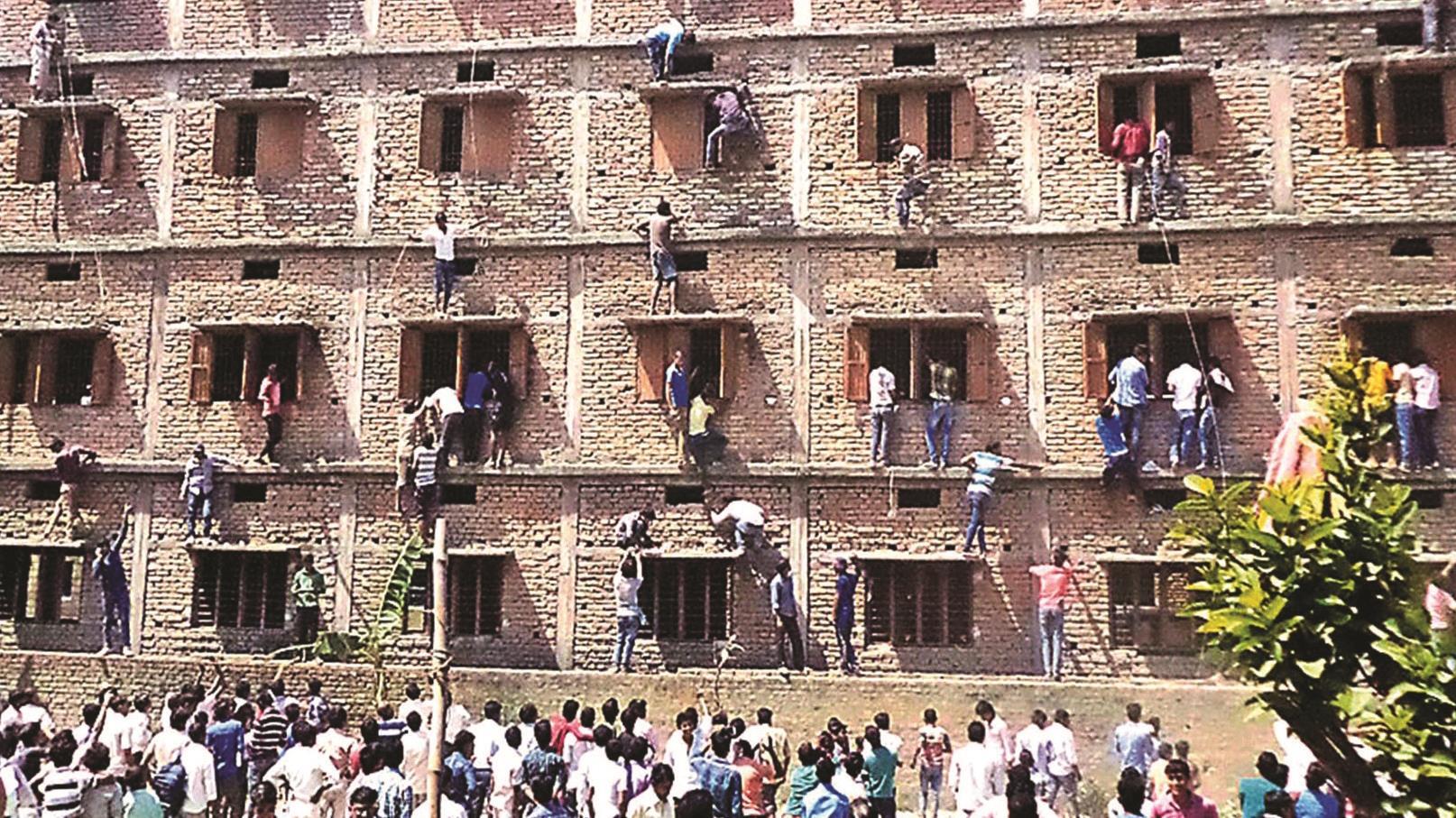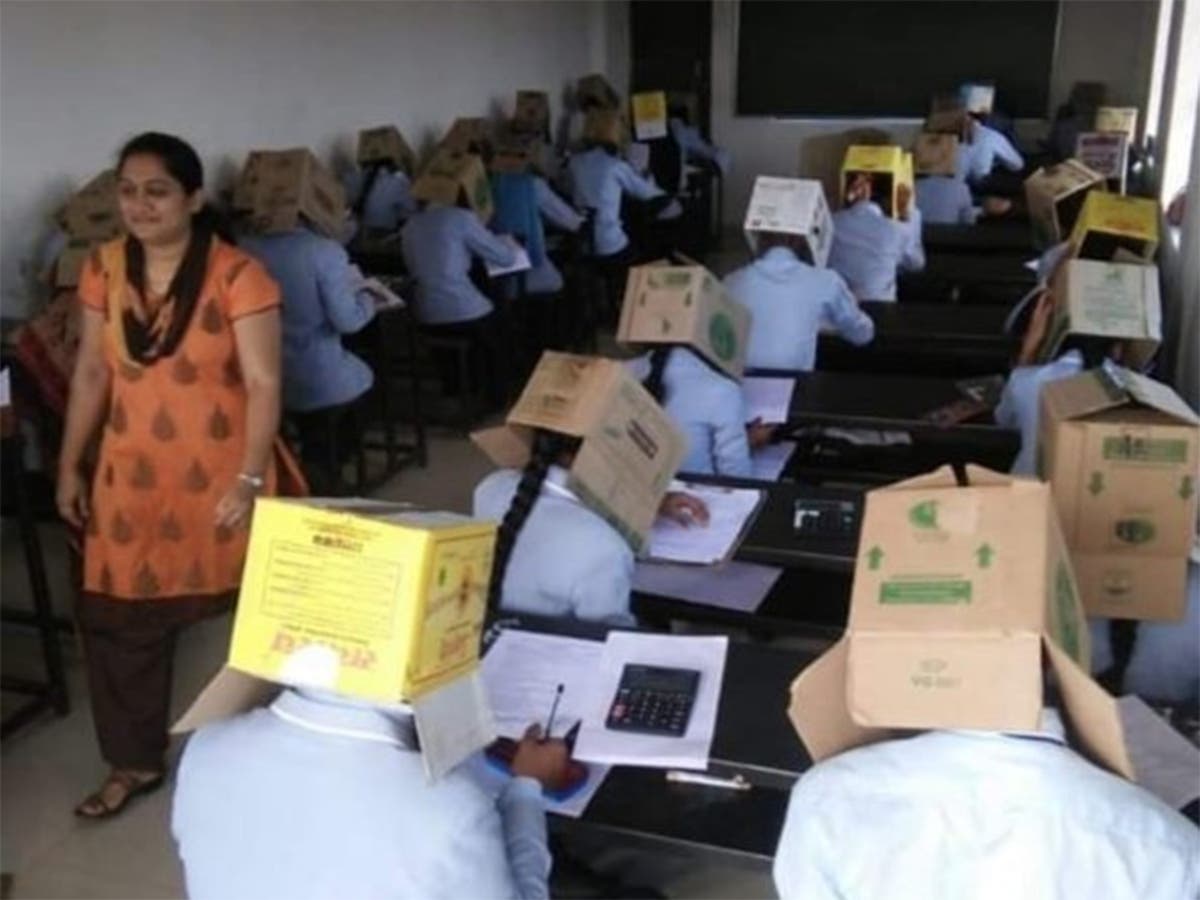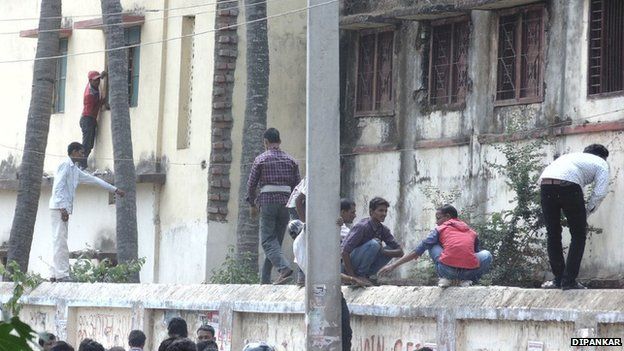Worthless Degrees Are Creating an Unemployable Generation in #India. Businesses have difficulty recruiting because of the poor #quality of #education. This has kept #unemployment at a high level of over 7%.
https://www.bloomberg.com/news/arti...rld-s-fastest-growing-major-economy#xj4y7vzkg
Business is booming in India’s $117 billion education industry and new colleges are popping up at breakneck speed. Yet thousands of young Indians are finding themselves graduating with limited or no skills, undercutting the economy at a pivotal moment of growth.
Desperate to get ahead, some of these young people are paying for two or three degrees in the hopes of finally landing a job. They are drawn to colleges popping up inside small apartment buildings or inside shops in marketplaces. Highways are lined with billboards for institutions promising job placements.
Around the world, students are increasingly considering the return on degree versus cost. Higher education has often sparked controversy globally, including in the US, where for-profit institutions have faced government scrutiny. Yet the complexities of education in India are clearly visible.
It has the world’s largest population by some estimates, and the government regularly highlights the benefits of having more young people than any other country. According to a study by talent assessment firm Wheebox, half of all graduates in India are unemployed in the future due to problems in the education system.
Many businesses say they have difficulty recruiting because of the mixed quality of education. This has kept unemployment at a high level of over 7%, even though India is the fastest growing major economy in the world. Education is also becoming a big issue for Prime Minister Narendra Modi as he tries to attract foreign manufacturers and investors from China. Modi vowed to create lakhs of jobs in his campaign speeches, and the issue is likely to be hotly debated in the 2024 national elections.
“We face a challenge in hiring as the specific skill sets required by the industry are not readily available in the market,” said Yashwinder Patial, Director, Human Resources, MG Motor India.
The complications of the country’s education boom are visible in cities like Bhopal, a metropolis of about 2.6 million in central India. Huge hoardings of private colleges are ubiquitous, promising degrees and jobs to young people. One such advertisement said, “Regular classes and better placements: We need to say more.”
It is difficult to resist such promises for millions of young men and women dreaming of a better life in India’s dismal job scenario. Higher degrees, once accessible only to the wealthy, hold a special hold for young people from middle- and low-income families in India. Students interviewed by Bloomberg cited a variety of reasons for investing in more education, ranging from attempting to boost their social status to improving their marriage prospects to applying for government jobs, for which applicants are required to pay. Degree certificate is required.
Twenty-five-year-old Tanmay Mandal, a Bhopal resident, paid $4,000 for a bachelor’s degree in civil engineering. He was convinced that a degree was a path to a good job and a better lifestyle. He was not bothered by the high fees for his family, whose monthly income is only $420. Despite the cost, Mandal says he learned almost nothing about construction from teachers who appeared to have insufficient training themselves. He could not answer technical questions in job interview and is unemployed for the last three years.
Mandal said, ‘I wish I had studied in a better college.’ “Many of my friends are also sitting idle without jobs,” Mandal said. He still hasn’t given up. Even though he did not find his final degree useful, he wants to avoid the stigma of being unemployed and sitting idle. So, he has signed up for a master’s degree in another private institution as he believes that more degrees can at least raise his social status.
There is a bustling market place in the heart of Bhopal with training institutes for civil services, engineering and management. The students said that they had enrolled for these courses to upgrade their skills and boost their career opportunities after regular degree, as they did not get jobs of their choice.
A Bhopal educational institution in particular hit the headlines in recent years because it was involved in a case that went all the way to the Supreme Court of India. In 2019, the Supreme Court barred the Bhopal-based RKDF Medical College Hospital and Research Center from admitting new students for two years for allegedly using fake patients to meet the requirements of the medical college. The college initially argued in court that the patients were genuine, but later apologized after an investigative panel found that the alleged patients were not in fact sick.
“We have noticed a disturbing trend of some medical colleges in projecting bogus faculty and patients to obtain permission for admission of students,” the court said in its judgement. The medical college did not respond to a request for comment.
The Medical School is part of the RKDF Group, a well-known name in Central India with a wide network of colleges in fields ranging from Engineering to Medicine and Management. The group faced another controversy last year. In May last year, police in the southern city of Hyderabad arrested the vice-chancellor of the RKDF group’s Sarvepalli Radhakrishnan University as well as his predecessor for their alleged involvement in awarding fake degrees. Still, a flood of students could be seen in many RKDF institutes in Bhopal. One branch had posters of their “bright stars”—students who got jobs after graduation.
SRK University and RKDF University of RKDF Group did not respond to multiple requests for comment. On its website, the group says that it provides quality education by imparting teaching and practical skills while striving to provide robust infrastructure and facilities.
Elsewhere in Bhopal, another college was functioning in a small residential building. One of the students who studied there said that it was easy to secure admission and get a degree without attending classes.
India’s education industry is projected to reach $225 billion by 2025 from $117 billion in 2020, according to the India Brand Equity Foundation, a government trust. This is still very small compared to the US education industry, where spending is estimated to exceed $1 trillion. In India, public spending on education has remained stagnant at around 2.9% of GDP, well short of the 6% target set in the government’s new education policy.
The problems at the colleges have spread across the country, with a range of institutions in different states under official scrutiny. In some parts of India, students have gone on hunger strike to protest against the lack of teachers and facilities in their institutions. In January, charges were filed against the Himachal Pradesh-based Manav Bharti University and its promoters for allegedly selling fake degrees, according to a press release from the Enforcement Directorate. Manav Bharati University did not respond to a request for comment.
While institutes promote campus placements for students, many are not able to deliver on this promise. In 2017, an institute in the eastern state of Odisha offered fake job offers during campus placements, prompting students to protest.
Anil Swaroop, former secretary of school education, estimated in a 2018 article that of the 16,000 colleges offering bachelor’s qualifications for teachers, a sizeable number exist only in name.
Anil Swaroop, former secretary of school education, estimated in a 2018 article that of the 16,000 colleges offering bachelor’s qualifications for teachers, a sizeable number exist only in name.
“To call such so-called degrees useless would be an understatement,” said Anil Sadgopal, former dean of education at Delhi University and former member of the Central Advisory Board of Education that guides the federal government. “When lakhs of youth become unemployed every year, the whole society becomes unstable.”
All this is a challenge for big business. A study by HR firm SHL found that only 3.8% of engineers have the skills needed to be employed in software-related jobs in start-ups.
“The experience everyone has in the IT industry is that graduates need training,” said Mohandas Pai, former chief financial officer and board member of Infosys Ltd. and co-founder of private equity firm Aarin Capital. Pai, one of the Manipal Education and Medical Group companies, “trains a lot of people for banking. They are not job ready, they need to be trained.”
Even though companies are looking to recruit in areas such as electric vehicle manufacturing, artificial intelligence and human-machine interfaces, smaller Indian universities still teach older material such as the basics of the internal combustion engine, Patial said. “There’s a gap between what the industry is seeing and the curriculum they’ve gone through.”
India has regulatory bodies and professional councils to regulate its educational institutions. While the government has announced plans for a single agency to replace all existing regulators, it is still at the planning stage. The Education Department did not respond to a request for comment.
The Modi administration is also trying to address the shortcomings of the education sector in its new education policy of 2020, committed to improving the quality of its institutions. It has also started the process of allowing leading foreign universities to set up campuses in the country and award degrees.
Meanwhile, finding work remains a challenge for this generation. According to the World Bank, unemployment is a ticking time bomb as nearly a third of the country’s youth are not working, studying or undergoing training. Some are getting involved in crime and violence. Last year, angry youths facing bleak job prospects blocked rail traffic and highways, even setting some trains on fire.
Pankaj Tiwari, 28, says he paid Rs 100,000 for a master’s degree in digital communication because he wanted a job and a higher status in society. It was a huge outlay for his family, which has an annual income of Rs 400,000. Though his college had promised campus placements, no company turned up and he is still unemployed after four years.
“Had I gotten some training and skills in college, I might have been in a different situation. Now I feel like I wasted my time.’ “I have obtained certificates only on paper, but they are of no use.”
















